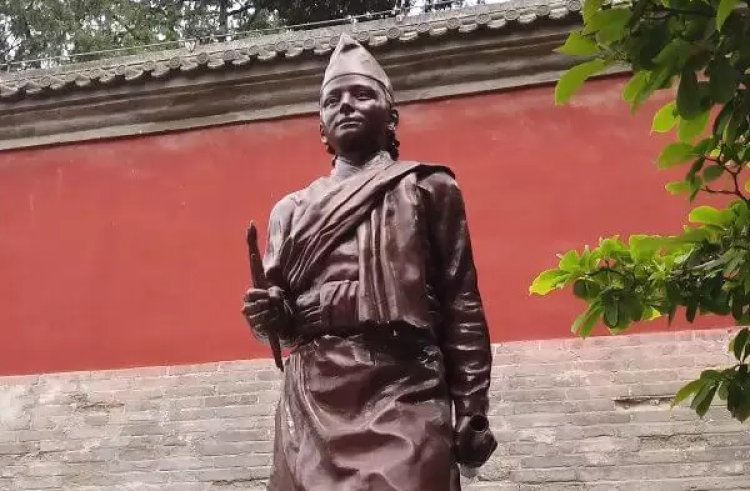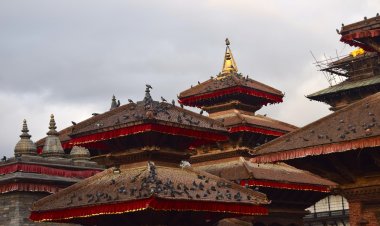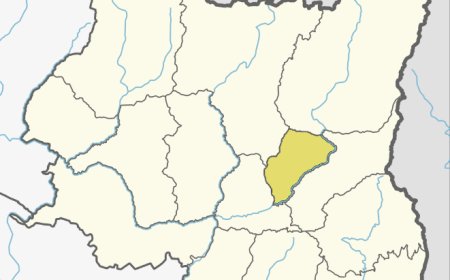Araniko: A Cultural Bridge between Nepal and Yuan China
Explore the life and legacy of Araniko, the renowned Nepalese artist and architect born in 1245, known for his contributions to Chinese and Tibetan art.

In the annals of history, few figures have left as indelible a mark on the world of art and cultural exchange as Araniko, known by various names such as Aniko or Anige. Born in 1245 in the lush Kathmandu Valley of Nepal during the reign of King Abhaya Malla, Araniko's artistic prowess and cultural contributions have transcended time and continue to be celebrated to this day. This article delves into the remarkable life and legacy of Araniko, who served as a cultural bridge between Nepal and the Yuan dynasty of China.
Early Years: A Child Prodigy
Araniko's journey into the world of art began at an incredibly young age. A well-known anecdote from his epitaph recounts an incident when he was merely three years old. While visiting a temple with his parents and gazing up at a stupa, he inquired, "Who made its wooden stambha?" This question, posed by a child of such tender years, astounded those around him. It was evident that Araniko possessed an innate talent and curiosity for the arts, a talent that would shape his future and resonate across centuries.
At a mere seven years of age, Araniko displayed a temperament far beyond his years. His mastery of school textbooks and swift emergence as a skilled calligrapher left even seasoned elders acknowledging their own inferiority. His early aptitude for memorizing treatises on art set the stage for his future endeavors as an artist, sculptor, and architect.
Mission to Tibet: Building the Golden Stupa
The turning point in Araniko's life came with an important mission to Tibet. In 1260, Kublai Khan, the founder of the Yuan dynasty, issued a decree to Drogön Chögyal Phagpa, the fifth patriarch of the Sakya sect of Tibetan Buddhism. Kublai Khan sought the construction of a golden stupa in honor of the Sakya Pandita Kun dga' rgyal mtshan, the fourth patriarch of the sect. Phagpa, recognizing the affinity between the artistic values of the Tibetans and the Nepali tradition, embarked on a quest to Nepal to recruit artisans for this significant undertaking.
Arniko, then only seventeen, was among the artisans chosen for the task. When asked to select a leader from among the artisans for the mission, Arniko's confidence and determination stood out. Despite his youth, he stepped forward and boldly declared, "My body is indeed young, but my mind is not". With this conviction, he was appointed the leader of the eighty artisans selected for this mission.
In Tibet, Araniko's exceptional artistic skill and administrative acumen did not go unnoticed. He captivated Phagpa with his work and, in 1261, Phagpa entrusted him with the vital role of supervising the construction of the golden stupa. Arniko, who had spent two years on this ambitious project, had proven his mettle as a gifted artist and builder. Phagpa recognized that Araniko's talents transcended the confines of Tibet.
Journey to the Yuan Court: Araniko's Impact on Chinese Art
Phagpa, now poised to play a crucial role at the Yuan court, recognized the need for someone of Araniko's artistic caliber in the Chinese capital. With the support of Phagpa, Araniko was encouraged to forego his return to Nepal and embark on a journey to the Mongol court, ultimately presenting himself to Kublai Khan. This marked the beginning of Araniko's influential career as a cultural envoy.
Phagpa not only accepted Araniko as his disciple but also initiated him into secret Buddhist treaties. This spiritual elevation was accompanied by extensive training and preparation for the role that Araniko was destined to play in the cultural exchanges between Nepal and the Yuan dynasty.
The White Stupa at Miaoying Temple: Araniko's Masterpiece
Araniko's most renowned architectural masterpiece is the White Stupa, located at the Miaoying Temple in Beijing. This iconic structure, built during 1279–1288 CE, stood as the largest of its time. Rising to a height of 50.9 meters with a diameter of over 30 meters at its base, it was a testament to Araniko's architectural prowess.
The White Stupa featured thirteen broad circular bands of molding, known as the "Thirteen Heavens", which adorned its surface. At its apex, an umbrella-like bronze disc structure was crowned with 36 bronze bells. Topping it all was a small bronze pagoda, a work of art in itself. The temple complex was declared a National Treasure, preserving it from the ravages of the Cultural Revolution in the 1960s.
Araniko's legacy extended beyond this architectural marvel. His portfolio included three stupas, nine great Buddhist temples, two Confucian shrines, one Daoist temple, and numerous images and objects used within and outside the court.
Arniko's Demise and Lasting Impact
Arniko's tenure in China was marked by significant honors and recognition. He was named Director of All Artisan Classes in 1273 and became the Duke of Liang, a title decorated with Ta Sa Thu, the equivalent of a minister in Chinese imperial history. His significant contributions were acknowledged both during his lifetime and in subsequent centuries.
Tragically, Araniko passed away in March 1306, at the age of sixty-two. His official epitaph, composed by Cheng Jufu in 1316, remains one of the primary sources for understanding his life and career.
Arniko's Cultural Legacy and Influence
Araniko's impact was not limited to his lifetime or the Yuan dynasty. He played a pivotal role in the artistic exchange between Nepal and China. His work represented the third wave of artistic influences from Central and South Asia in Chinese Buddhist art. Drawing inspiration from the artistic traditions of Pāla, Nepal, and China, Araniko's contributions continued to influence Buddhist art during the Ming and Qing dynasties.
His enduring legacy has been celebrated and honored in various ways. The Nepalese government issued postal stamps in his name, and an important highway in Nepal bears his name. In literature, Araniko has been commemorated through poems, books, and translations.
In addition, references to Araniko abound in contemporary culture, from skateboards to television channels. His legacy endures as a testament to his role as a cultural bridge between Nepal and Yuan China.
Conclusion
Araniko's life was marked by his remarkable journey from an artistic prodigy in the Kathmandu Valley to a revered cultural envoy in the Yuan dynasty of China. His architectural masterpiece, the White Stupa at the Miaoying Temple, stands as an enduring symbol of his architectural prowess. Beyond his own lifetime, Araniko's influence continued to shape Chinese Buddhist art and cemented his legacy as a key figure in the artistic exchanges between Nepal and China. Araniko's name lives on in the annals of history as a testament to the enduring power of art and cultural exchange.
Frequently Asked Questions (FAQ)
-
Who was Araniko and where was he born?
Araniko, also known as Aniko or Anige, was a renowned Nepalese artist and architect born in 1245 in the Kathmandu Valley of Nepal. -
What are some early indications of Araniko's artistic talent?
Araniko displayed artistic curiosity at an early age. At three, he asked about the creator of a stupa. By seven, he was mastering textbooks and calligraphy. -
How did Araniko's journey to Tibet shape his career?
Araniko was chosen to lead a mission to Tibet to build a golden stupa. His leadership and exceptional artistic skill were pivotal in this endeavor. -
What influenced Araniko's journey to the Yuan court in China?
Araniko's mission in Tibet caught the attention of Phagpa, the Sakya preceptor. As Phagpa assumed a role at the Yuan court, he encouraged Araniko to bring his artistic talents to China. -
What is the White Stupa at Miaoying Temple, and what is its significance?
The White Stupa, a masterpiece by Araniko, is located at the Miaoying Temple in Beijing. It is a monumental structure showcasing Araniko's architectural brilliance. -
What were Araniko's contributions at the Yuan court in China?
Araniko's work extended beyond the White Stupa. He designed and built stupas, temples, shrines, and various images and objects, leaving a profound impact on Chinese art. -
How was Araniko recognized during his lifetime?
Araniko was awarded prestigious titles and honors, including the Duke of Liang. He was also named Director of All Artisan Classes in 1273. -
What was the last chapter of Araniko's life, and when did he pass away?
Araniko passed away in March 1306, at the age of sixty-two. His remains were cremated according to Nepali customs, and his ashes were buried in a stupa in Wanping County, near the Chinese capital. -
How did Araniko's influence continue beyond his lifetime?
Araniko's impact extended to later dynasties, shaping Chinese Buddhist art. His contributions bridged artistic traditions from Pāla, Nepal, and China. -
How is Araniko's legacy celebrated today?
Araniko's legacy is commemorated in various ways, including postal stamps issued by the Nepalese government and an important highway in Nepal named after him. In literature, his life and contributions have been celebrated through poems, books, and translations.
What's Your Reaction?





































































































